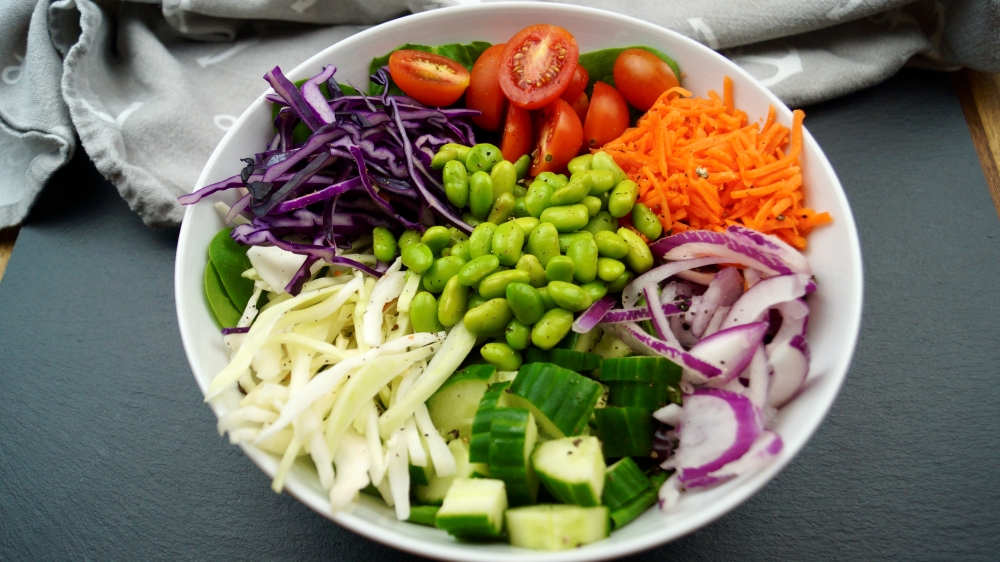When working out, you may overhear the terms ‘Macros’ and ‘Micros’ in the conversations of nutritionists, fitness trainers, or martial arts fighters. They may sound like insider jargon with little to do with the average person, but the two terms describe simple dietary concepts.
Let’s start with ‘Macros,’ the short-form version of the word ‘Macronutrients.’ A nutritionist will describe macros as a category of nutrients the body consumes in large amounts. The body needs macronutrients for fuel (energy) and building materials that maintain cells and tissue. We can further split macronutrients into carbohydrates, fats, and proteins. Some nutritionists will also include water in this short but complete list of macros.
The body needs relatively tiny quantities of nutrients like vitamins, minerals, and antioxidants. These nutrients may come in small doses, but they play significant roles in the body. The umbrella term for these beneficial compounds is micronutrients.
Ready to learn how to balance macros and micronutrients in ways that help with your health and fitness goals? Let’s move past definitions and look at the roles of macros and micros in your diet and general health.
The Role Of Macronutrients In The Body
It takes enormous amounts of macronutrients to power the body daily. Carbohydrates fuel each living cell in every organ system in the body. Without this fuel, cells could not power themselves to stay alive and perform their roles.
Protein is a second macro that the body uses to create cell structures, enzymes, hormones, and many other useful compounds in the body. In other words, protein is a major building block in muscle, organs, and tissues, including blood.
The third macronutrient we mention is fats, an energy source in their own right. Fats provide an efficient energy source that burns slower and longer than carbohydrates. You need this kind of metabolism to happen when muscles perform steady, continuous movements for an extended period. Fats also help the body absorb and metabolize micronutrients like vitamins A, C, and E.
Although it’s not a nutrient, water gets a special mention for its countless uses in the body.
The Role Of Micronutrients In The Body
Vitamins and minerals are nutrients that support many housekeeping tasks in the body. These micronutrients are helpful in tasks that include cell creation, tissue growth, cell repair, and regulating the body’s overall metabolism. Some micronutrients also help with processes like fighting and preventing disease.
Here’s a list of the more famous micronutrients and their uses:
- The body needs B vitamins to break down food and nutrients into raw energy that cells can use directly.
- Vitamin C is an ingredient that creates proteins like neurotransmitters and collagen. This is in addition to being an excellent immune booster.
- The body uses vitamin D to absorb calcium into bone tissue and wherever else the mineral is needed.
- Vitamin K also helps with the creation of bone tissue, plus it is essential in the formation of blood clots.
- Vitamin E is an antioxidant that protects against cell damage.
- Minerals like calcium and phosphorus are essential building blocks for bone tissue. Phosphorus is also the active ingredient in the energy that the cell uses to power itself.
- Magnesium supports the action of numerous enzymes that regulate different processes in the body.
- Potassium plays an essential role in the working of the heart and nervous system.
- Sodium supports nerve function while maintaining a good balance of fluids in the body.
Small amounts of vitamins and minerals play prominent roles in driving the health and basic operation of the body. A lack of these micronutrients will cause poor health in the long term. Luckily, we can source micronutrients from healthy foods that are relatively easy to find.
Common Sources Of Macros And Micros
Mother Nature goes out of her way to pack an impressive array of nutrients into healthy food sources. Grain and cereals will have a few vitamins to go with the carbohydrates they contain. Animal protein will also provide a good selection of vitamins and minerals. This convenient packaging makes loading up on macros and micros easier without leaning on encyclopedias, shamans, and fancy nutrient calculators. The following sections briefly explain how nature’s ingenious pantry works for you.
Excellent And Healthy Sources Of Carbohydrates
We’ve already mentioned that healthy sources of carbohydrates come with additional nutrients. As a rule of thumb, the less processing that goes into your source of carbs, the better. The logic here is that processing strips these food sources of good stuff like fiber and micronutrients. Here are some examples of healthy sources of carbs:
- Whole grains like minimally processed wheat and brown rice also have B vitamins.
- Oats, millets, and sorghum pack their fair share of minerals.
- Tubers like sweet potatoes, yams, and cassava have decent amounts of minerals and vitamins.
- Legumes and pulses come with plant protein, minerals, vitamins, and plenty of carbs.
There are various healthy sources of carbs, and most parts of the world have their local sources. Quinoa and plantain are just two examples of carbs from further afield.
Good Sources Of Protein
Animal protein like meat, fish, eggs, seafood, and dairy are rich, ancient sources of essential amino acids. These protein sources also pack lots of minerals, vitamins, fats, and calories. Many pulses and legumes also have a good amount of protein, in addition to different macros and micros.
Good Sources Of Healthy Fats
You can get a supply of healthy, non-saturated fats from nuts, seeds, olives, vegetable oils, avocado, eggs and fish.
Common Foods That Are Also Rich Sources Of Micronutrients
Most foods we mentioned in the previous sections contain multiple vitamins and minerals. Fruits and vegetables are rich in vitamins and have small amounts of minerals that they pull from the soil. The same goes for eggs, fish, and other kinds of animal protein.
Still, mineral-rich foods like beets, spinach, liver, fish, and lean meat are worth highlighting. These foods provide the minerals that the body needs to function and are also good sources of many other nutrients.
Balancing Macros And Micros To Meet Different Health Needs
Age, health status, lifestyle, and fitness goals are factors that inform the balance of nutrients that the body needs. As an example, young kids and teenagers need nutrients that support growth. This translates to a steady supply of protein, carbs, and micronutrients.
Expectant mothers would need a similar set of macros and micros, except with fewer calories and an emphasis on iron and folate.
Here’s how to match macros and micros to different needs:
1) Macronutrients And Micronutrients For Children And Teens
Healthy, growing people typically expend plenty of energy because of an active lifestyle. As such, their meals should have enough carbs to keep up with cell growth, organ development, and play. As they grow, kids and teens also need plenty of protein, vitamins, and minerals. These nutrients are necessary for building bone, muscle, brain tissue, nervous, and immune systems.
2) Balancing Macros And Micros For People With Health Issues
‘Health issue’ is an umbrella term that covers injury, chronic illness, acute illness, developmental problems, disability, and mental health problems. From this loose definition, we can already see that doctors and nutritionists will craft custom diet plans to deal with different health conditions. For example:
- An obese person with Type 2 diabetes will need far less carbs than a professional athlete.
- A doctor will emphasize iron in the diet of an anemic patient and maybe iodine for the patient with a thyroid issue.
- A child with a protein deficiency will need to adopt a high-protein diet.
These are just a few examples of how doctors work diet into patients’ treatment plans.
3) Balancing Macros And Micros For Athletes
Competitive athletes spend lots of time competing and training for competitions. They need enough carbs to meet the energy demands of a highly physical lifestyle. Athletes also need a steady supply of protein to take care of muscle repair and muscle growth. Similarly, they need plenty of minerals to counter the wear and tear in bone, motor nerves, and immunity.
The type of diet an athlete needs also depends on the sport they pursue. An MMA fighter may have to track their carbs and weight to compete in a specific weight class. In contrast, a bodybuilder will focus on building muscle. That same MMA fighter will need a diet rich in carbohydrates on fight day to perform optimally.
4) Balancing Macros And Micros In Middle Age And Old Age
Many people experience a reduction in metabolic rate as they grow older, and gaining weight becomes annoyingly easy. At this stage in life, we should reduce our carbohydrate intake to make more space for protein and micronutrients. This means ditching junk food in favor of fruit, vegetables, and moderate amounts of protein.
There’s A Perfect Balance Of Macros And Micros For Each One Of Us
Your diet should match your health needs, fitness goals, and the selection of foods available. Thankfully, nature’s way of packaging foods makes it easier to get all your macros and micros in simple, healthy, and reasonably affordable meals.
You may also like:
Strength Training Myths Debunked: Separating Fact From Fiction In The Gym

















